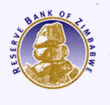Reserve Bank of Zimbabwe
The Reserve Bank of Zimbabwe is the central bank of Zimbabwe headquartered in the capital city of Zimbabwe, Harare.
| |||
| Headquarters | New Reserve Bank Tower, Harare, Zimbabwe | ||
|---|---|---|---|
| Ownership | 100% state ownership[1] | ||
| Governor | John Mangudya | ||
| Central bank of | Zimbabwe | ||
| Currency | Zimbabwean bond coins and Zimbabwean bond notes USD (ISO 4217) | ||
| Reserves | 290 million USD[1] | ||
| Website | www | ||
History
The bank traces its history to the Reserve Bank of Rhodesia, founded on 22 May 1964, but which succeeded the Reserve Bank of Rhodesia and Nyasaland (1956-1963) which had been liquidated at the collapse of the Federation of Rhodesia and Nyasaland in 1963.[2] Prior to 1956, there was a Central African Currency Board from 1953, but which had been established as the Southern Rhodesia Currency Board in 1938 to provide Rhodesian currency, fully backed and bound to British sterling. The local currency which this Board was mandated to supply to Southern Rhodesia (colonial Zimbabwe), Northern Rhodesia (colonial Zambia) and Nyasaland (colonial Malawi) had been established through the Southern Rhodesia Coinage and Currency Act of 1932. The Reserve Bank of Rhodesia (which became the Reserve Bank of Zimbabwe at independence) has continued to function, and has grown in operations and staff, through a variety of changes in sovereignty and governmental structure in Rhodesia and Zimbabwe. For over 4 decades the RBZ operated from the Reserve Bank Building along Samora Machel Avenue (formerly Jameson Avenue) adjacent to First Street. In the late 1980s a competition was conducted to design the new building and the winning design was by Clinton & Evans and Architects, the engineer was Marjem Chatterton; they went on to design the Reserve Bank of Malawi Building as well. Construction of the new RBZ building began in 1993 and was fully completed in 1997 but was officially opened by President Robert Mugabe on May 31, 1996. The building is the tallest in Zimbabwe standing at a height of 394 feet with 28 floors above ground.
Governors of the Reserve Bank of Rhodesia
Governors of the Reserve Bank of Zimbabwe
The Governor is appointed by the President of Zimbabwe for renewable five-year-terms.
- Desmond Krogh, 1979-1983[4][3]
- Kombo Moyana, 1983-1993[3]
- Leonard Tsumba, 1993-2003[3]
- Charles Chikaura, June 2003 - December 2003, acting[3]
- Gideon Gono, 2003-2013[3]
- Charity Dhliwayo, 2013-2014, acting
- John Mangudya, 2014-
Structure
The Reserve Bank of Zimbabwe Act provides for a board of directors and a governor. The governor, assisted by three deputy governors, is responsible for the day-to-day administration and operations of the bank. The current governor is John Panonetsa Mangudya.[5] The governor and his three deputies are appointed by the president for five-year terms that may be renewed. The governor also serves as chairman of the board. The board's membership includes the three deputies and a maximum of seven other non-executive directors, intended to represent key sectors of the economy.
Operations

The Reserve Bank's most important role is to create and enact monetary policies. According to the bank's website, as the only producer of Zimbabwe's bank notes and coins, it regulates the amount of money in circulation. However, since a range of foreign currencies is currently in use for domestic transactions, the bank's ability to control money supply is limited. The Reserve Bank also looks after the country's gold, as well as purchase and refine precious minerals like diamonds, gold and silver through its subsidiary Fidelity Printers and Refinery. The bank serves as an advisor to the government, providing the government with daily banking services. It is also active in promoting financial inclusion policy and is a member of the Alliance for Financial Inclusion.[6]
Relevancy
Due to the unstable economic conditions and failure to control inflation (2008), economists have suggested that the Reserve Bank be abolished. Some economists have suggested that the Reserve Bank of Zimbabwe be reformed. Legislation in 2008 was debated in the lower house of the Zimbabwean parliament with a view to limiting the so-called quasi-fiscal activities of the Reserve Bank.Alliance for Financial Inclusion.[7]
See also
- Banknotes of the Reserve Bank of Zimbabwe
- Central banks and currencies of Africa
- Economy of Zimbabwe
- Zimbabwe Mint
- Payment system
- Zimbabwean Bond Coins
- Real-time gross settlement
- Zimbabwean Bond Notes
- RTGS Dollar
References
- https://d-nb.info/1138787981/34
- "The Bankers' Almanac and Year Book". T. Skinner. April 28, 1966 – via Google Books.
- Kararach, George; Otieno, Raphael O. (February 11, 2016). "Economic Management in a Hyperinflationary Environment: The Political Economy of Zimbabwe, 1980-2008". Oxford University Press – via Google Books.
- "Central Banking Directory". Central Banking Publications. April 28, 1993 – via Google Books.
- "CBZ boss named new RBZ governor". Newzimbabwe.com. Retrieved 2016-09-18.
- "AFI members". AFI Global. 2011-10-10. Archived from the original on 2012-02-20. Retrieved 2012-02-23.
- "New Report Recommends Zimbabwe Abolish Its Central Reserve Bank". VoaNews.com. 2008-06-27. Retrieved 2016-10-06.
